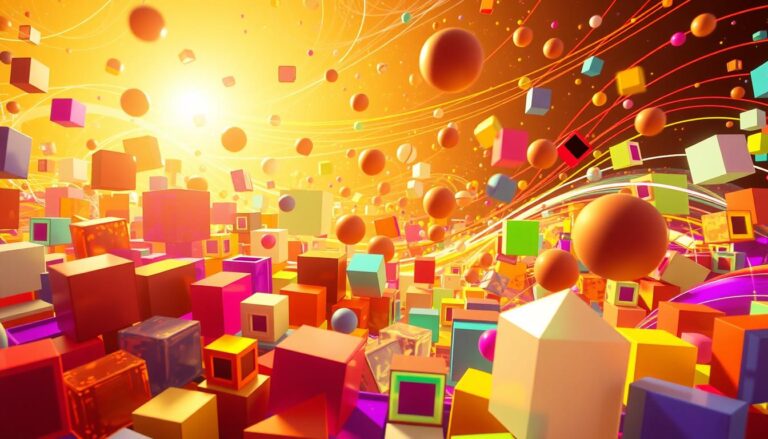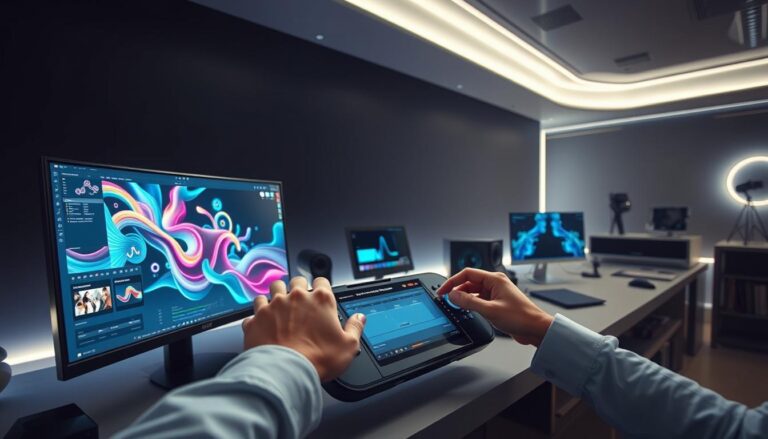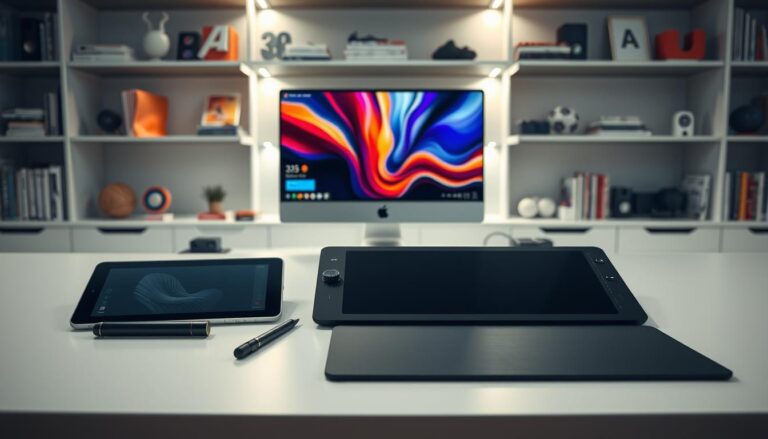The motion graphics industry is set to grow to $439.8 billion by 2027. This growth is partly due to more artificial intelligence in creative work.
This big growth makes us think about the future of motion design. We wonder if AI technology will take over. Or if humans will keep their creative roles.
As AI in motion design gets better, we ask if AI will replace human motion designers. The answer is not simple. This article will look into what might happen.
Key Takeaways
- The motion graphics industry is expected to grow significantly by 2027.
- AI is increasingly being integrated into motion design.
- The role of human creativity in motion design is being reevaluated.
- AI’s ability to replace human designers is a complex issue.
- The future of motion design will likely involve a mix of human and AI creativity.
The Evolution of Motion Design
The motion design world has changed a lot over time. It moved from old ways to new digital methods. This change brought new tools and more creative options for designers.
From Traditional Animation to Digital Revolution
At first, motion design was all about drawing by hand. It took a lot of work to make each frame. But then, digital tools came along. They made it easier to work with graphics and animations.
This digital revolution changed everything. Now, things can be made faster and look more amazing.
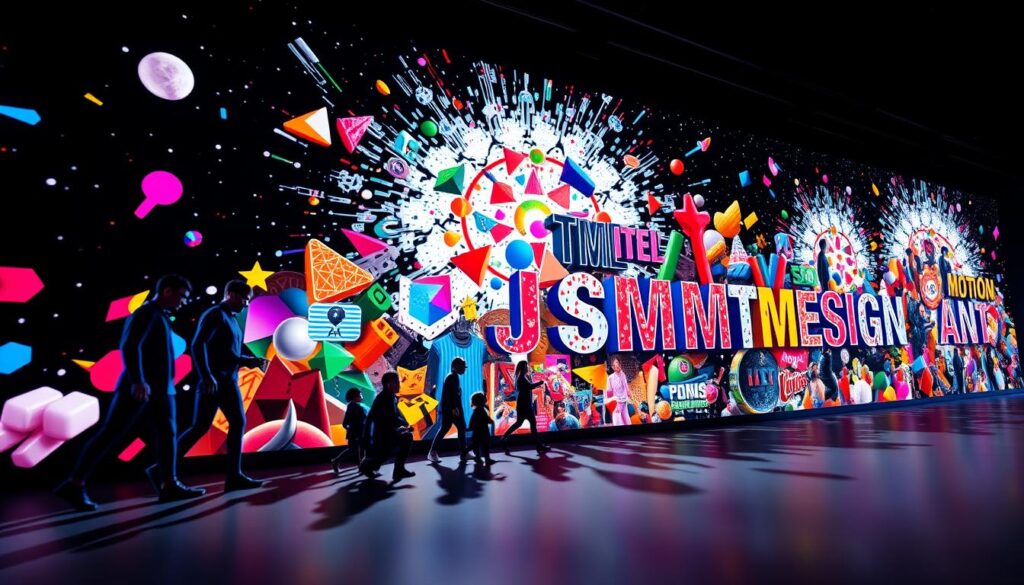
Today's Motion Design Landscape
Now, motion design is all about mixing creativity with tech. You see motion graphics everywhere. They’re in TV, movies, ads, and even on social media.
The table below shows what’s new and exciting in motion design today.
| Trend/Technology | Description | Impact on Industry |
|---|---|---|
| 3D Animation | Use of three-dimensional models and environments | Increased realism and depth in animations |
| Motion Graphics Software | Advanced tools like Adobe After Effects and Blender | Enhanced productivity and creative capabilities |
| AI and Automation | Integration of AI for tasks like animation and rendering | Streamlined workflows and new creative possibilities |
Understanding AI in Creative Fields
AI has changed how we make and see visual content. This change comes from new machine learning and generative AI. These tools help make complex visuals with little human help.
How AI Creates Visual Content
AI makes visuals by using special algorithms. Generative AI models like GANs learn from big data. They then use this knowledge to make new, unique content.
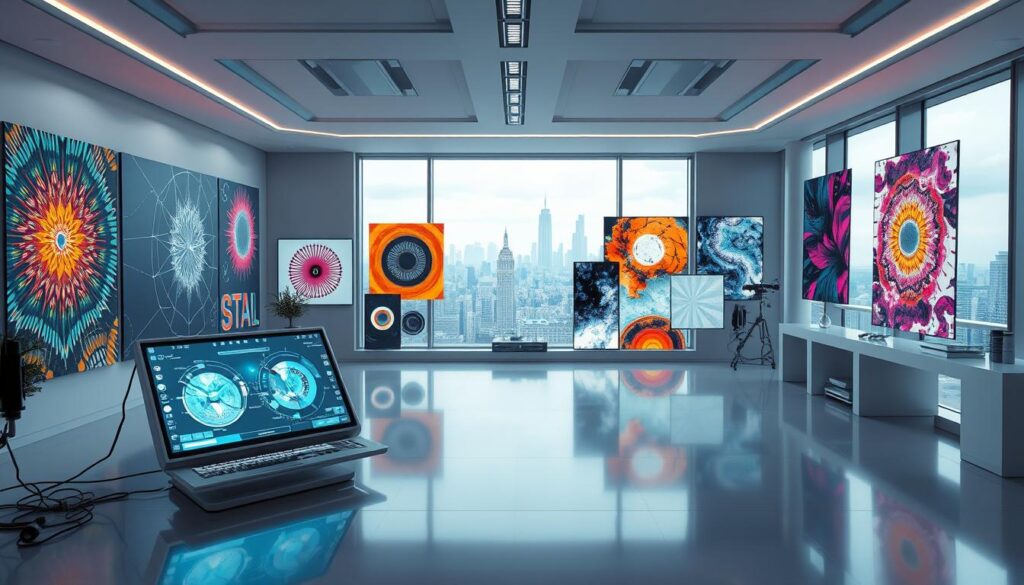
Recent Breakthroughs in AI-Generated Motion Graphics
AI has made big steps in motion graphics. It now does real-time rendering and animation techniques better. AI can even make complex animations by studying other graphics.
“AI is not just a tool; it’s a collaborator that can enhance human creativity.”
Our Case Study Methodology
This section talks about how we studied AI in motion design. We wanted to really get to know how AI works in this field.
Research Questions and Objectives
Our main question was: “How is AI used in motion design today?” We also wanted to know its effects on the industry. Our goals were to find out how AI is used now, see its impact on work, and look at its future.
Data Collection and Analysis Framework
We used a mix of qualitative interviews and quantitative analysis to gather data. We talked to motion design experts and looked at how AI tools are used. Our analysis used thematic analysis and 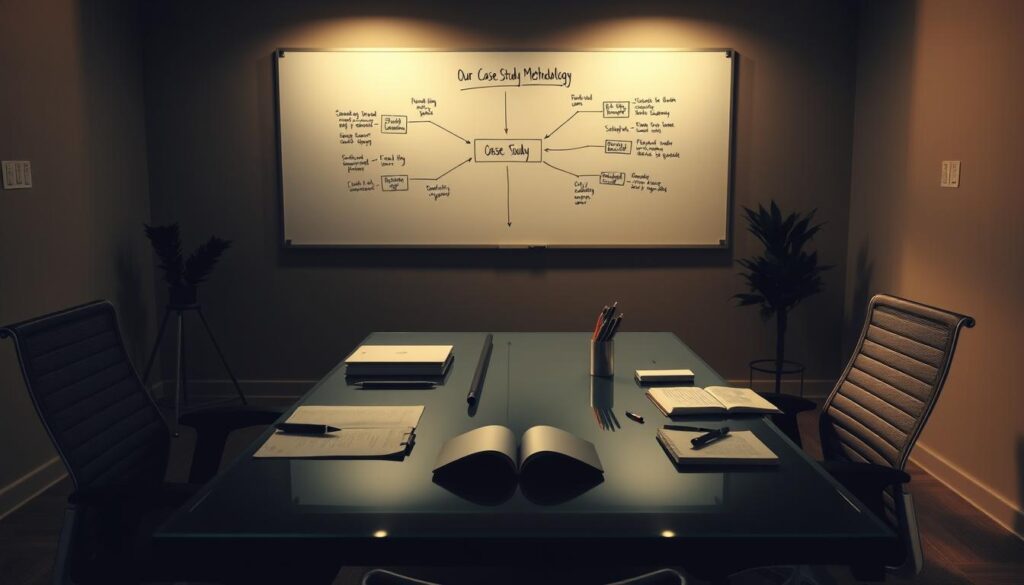
This way, we hoped to fully understand AI’s part in motion design.
Can AI Replace Motion Designers? Examining the Evidence
AI and motion design meet in a big way. This raises big questions about the future of creative jobs. We need to look at what AI can do and what it can’t.
Technical Capabilities: What AI Can Currently Achieve
AI has grown a lot in making motion graphics. AI tools can do boring tasks like formatting and color correction. This lets designers work on the fun stuff.
AI can make complex animations fast. It uses set templates and styles. 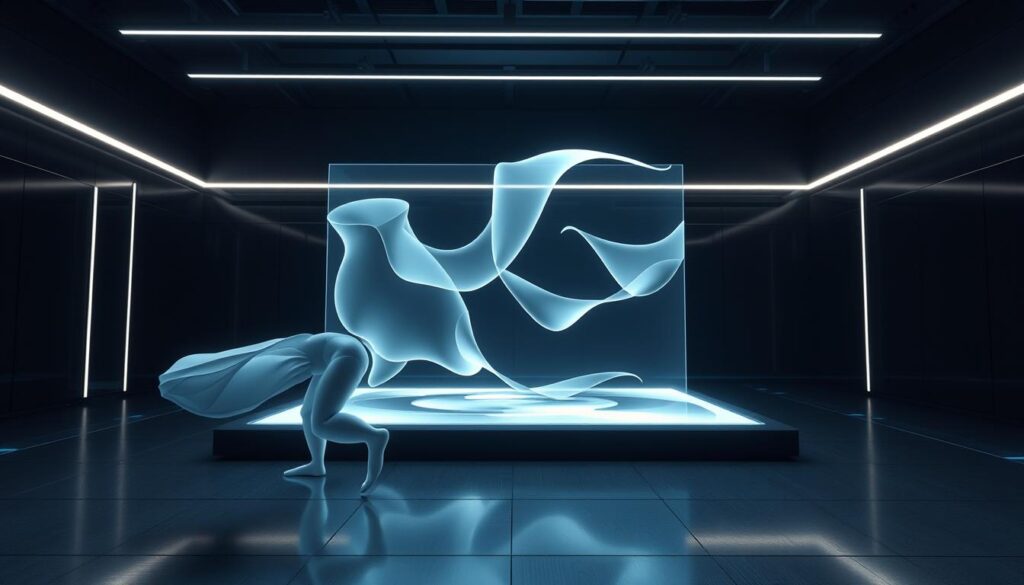
Creative Limitations: Where AI Stilts Falls Short
AI has come a long way, but it can’t match human creativity. AI doesn’t get emotions and big ideas like humans do. It makes pretty graphics, but it misses the project’s deeper meaning.
AI can help, but it can’t do everything. The future of motion design will mix AI and human creativity.
AI Tools Transforming Motion Design Workflows
AI is changing the motion design world. It makes tasks easier and helps designers be more creative. This change is not just about being faster. It lets designers focus on the fun parts of their job.
Automation of Repetitive Tasks
AI makes motion design better by doing boring tasks. It handles things like rendering and animation. This lets designers spend more time on creative work.
Time-Saving Automation Examples
AI makes rendering faster, saving a lot of time. Tools like Blender and Adobe After Effects use AI to speed up this process. AI also helps with animation, like making background loops. This lets designers work on harder, more creative tasks.
Quality Comparison of Automated vs. Manual Work
Some worry that AI work isn’t as good as human work. But AI has gotten much better. Now, AI-made animations look almost the same as ones made by hand. This is true for simple or template-based animations.
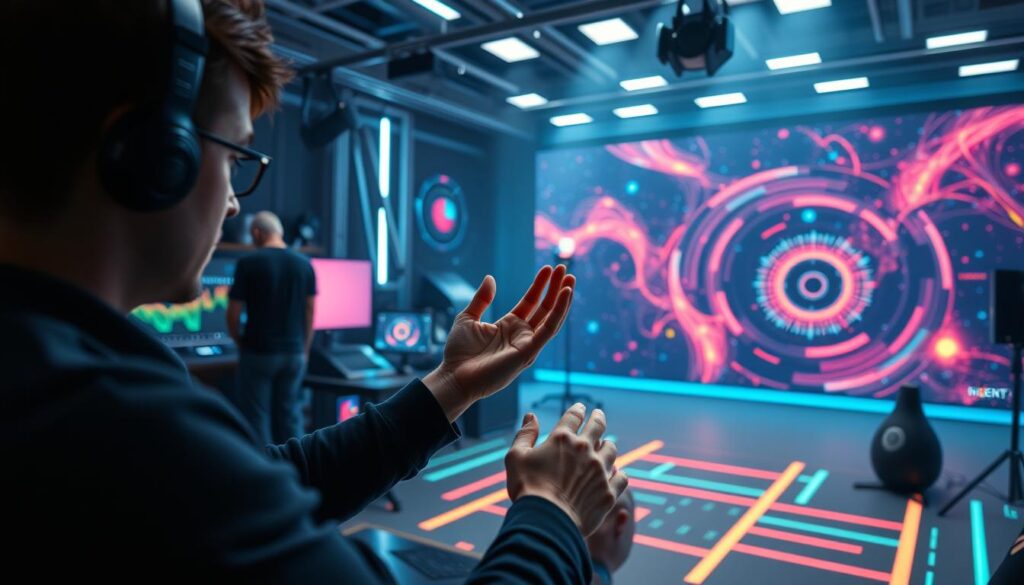
AI-Assisted Creative Processes
AI helps with creative tasks too. It looks at design trends and suggests colors. It even helps come up with initial ideas based on project briefs. This mix of human creativity and AI’s smarts is changing motion design.
Case Examples of Successful Integration
Many studios and designers use AI well. Some make complex animations that would take too long to do by hand. Others use AI to try new design ideas, making their work better.
In short, AI is not just changing motion design. It’s making designers more creative, efficient, and innovative.
The Human Element in Motion Design
Even with AI, the human touch is key in motion design. It adds creativity, intuition, and emotional understanding. These are important for making designs that touch people’s hearts.
Creativity and Conceptual Thinking
Humans are great at creativity and thinking big. They can make motion graphics that are new and exciting. They understand complex ideas and bring them to life in ways AI can’t.
This creative skill is essential for making content that grabs people’s attention.
Emotional Intelligence and Client Relationships
Emotional intelligence is big in motion design. It helps designers get what clients want and feel. They build strong relationships by being open and understanding.
Humans are good at talking and working with clients. This makes sure projects are a success.
Economic Impact Analysis: AI vs. Human Designers
The motion design industry is changing fast. AI is making big changes in how we work. It’s important to know how AI affects our jobs and money.
Cost Comparison: AI Solutions vs. Human Talent
Looking at AI’s impact on motion design, we see a big difference in costs. AI can save money in many ways:
- Reduced Labor Costs: AI does repetitive tasks, so we need less human help.
- Faster Project Completion: AI works faster than people, so projects finish quicker.
- Scalability: AI can do lots of work without costing more.
But, AI also brings new costs. We have to pay for AI’s development and upkeep.
Market Disruption Predictions and Trends
AI in motion design will shake things up. Here are some trends we might see:
- Increased Demand for AI-Skilled Professionals: As AI grows, we’ll need more people who know how to use it.
- New Business Models: AI might lead to new ways of doing business, like subscription services.
- Changes in Pricing Strategies: With AI making things faster, how we price our work might change.
Keeping up with these trends is key for businesses to stay ahead.
Motion Designers' Perspectives on AI
Experts talk about AI in motion design. They see both good and bad sides. It’s important to know what motion designers think.
Survey Results from Industry Professionals
A recent survey asked motion designers about AI. Here’s what they said:
- Concerns about job security: Many designers worry AI might take their jobs.
- Perceived opportunities: Others think AI can make their work better and faster.
Concerns About Job Security
Some designers fear AI could make their jobs go away. “The thought of being replaced by a machine is daunting,” said one designer.
Perceived Opportunities
But many see AI as a chance to be more creative.
“AI can handle boring tasks, so we can be more creative.”
Adaptation Strategies Being Implemented
Motion designers are learning to use AI. They’re getting better at working with it.
By using AI, designers can do better work. They stay ahead in a fast-changing world.
Hybrid Workflows: The Emerging Standard
AI is changing motion design. Now, we see hybrid workflows. These mix human creativity with AI’s speed. This new way is making the industry better by using the best of both.
Case Studies of Successful Human-AI Collaboration
Many motion design studios are using hybrid workflows. For example, a top studio let AI do the boring stuff. This let their designers work on the fun stuff. They saw a 30% increase in productivity.
Productivity and Quality Outcomes
Hybrid workflows make things better. AI takes care of the easy tasks. This lets designers work on the big ideas.
Efficiency Gains
- Projects finish up to 25% faster
- They make 20% more without losing quality
Creative Quality Assessment
Hybrid workflows make motion graphics better. Designers can now work on making their ideas shine. This leads to more interesting and detailed content.
With hybrid workflows, motion design is getting better. It’s a big step towards a future where humans and AI work together.
Skills Evolution for Future Motion Designers
AI is now a big part of motion design. We need to know how human skills can work with AI. It’s important to understand what skills motion designers will need in the future.
Technical Skills Becoming More Important
AI is making technical skills more important for designers. Knowing how to use AI tools is now a must. Designers need to be good at using these tools to do tasks faster and better.
Being good at using AI tools is key. For example, knowing how to use AI for:
- Automating repetitive tasks
- Generating complex visual effects
- Optimizing project timelines
is very important for designers to stay ahead.
Creative Skills That Remain Uniquely Human
AI is great at many technical things, but creative skills are special to humans. Humans can think creatively and bring new ideas to projects. These skills are important for making content that people love.
| Skill Type | Current Importance | Future Importance |
|---|---|---|
| Technical Skills | High | Very High |
| Creative Skills | Very High | Very High |
The table shows that technical skills are getting more important. But creative skills are always important. The best motion designers will be those who are good at both.
Ethical Considerations in AI-Generated Motion Design
AI-generated motion design is more than just tech. It also raises big ethical questions. As AI makes more motion graphics, the field faces new issues that need careful thought.
Copyright and Ownership Questions
One big worry is about copyright and ownership. Who owns a motion graphic made by AI? Is it the AI maker, the person who asked for it, or the AI itself? This is a tricky question with big legal answers.
- We need clear rules on who owns AI-made content.
- Unclear laws could lead to legal fights.
- It could also affect the jobs and rights of creative people.
Authenticity and Disclosure Concerns
Another big issue is authenticity and disclosure. As AI content gets better, it’s hard to tell what’s made by humans and what’s AI. This makes people worry about being honest and not tricking others.
- We must tell people when something is AI-made in ads and media.
- AI could spread false info, which is bad.
- We need ways to keep things clear about AI in motion design.
Dealing with these ethical issues is key for using AI right in motion design. By facing and solving these problems, we can make sure AI motion graphics are both new and fair.
Conclusion: The Collaborative Future of Humans and AI in Motion Design
The future of motion design is about working together. AI is changing the game by doing tasks faster and better. It also helps us tell stories in new ways.
In this collaborative future, humans and AI will team up. AI makes things faster and more efficient. But, humans bring creativity, feelings, and skills that AI can’t match.
The future of design will be all about working together. Motion designers will learn to use AI well. They will focus on being creative and solving big problems.
This partnership will bring amazing new things to motion design. We’ll see more detailed and personal visual stories. By working together, we can make the best of motion design and shape the future of design.
FAQ
Will AI completely replace human motion designers in the future?
AI can make great motion graphics. But, it won’t replace human designers. AI will help with easy tasks, letting humans focus on creative work.
What are the benefits of using AI in motion design?
AI makes motion design faster and cheaper. It can also do animation and color correction. This helps designers work better.
How will AI impact the job security of motion designers?
AI might do some tasks, but it can’t replace human creativity. Designers will need to learn new skills to keep up.
Can AI generate original and creative motion graphics?
Yes, AI can make graphics that look like they were made by humans. But, it’s limited by its training data.
How can motion designers work effectively with AI?
Designers should learn about AI tools. They should use AI to help, not do everything. This way, they can focus on creative decisions.
What skills will motion designers need to develop to work with AI?
Designers need tech skills like AI software. They also need creative skills like thinking and feeling.
Are there any ethical concerns surrounding AI-generated motion design?
Yes, there are concerns about who owns AI-made content. There are also worries about being honest about AI use. These need to be solved.
How will the use of AI in motion design change the industry?
AI will make motion design more collaborative. Humans and AI will work together. This will bring new chances for growth and creativity.


